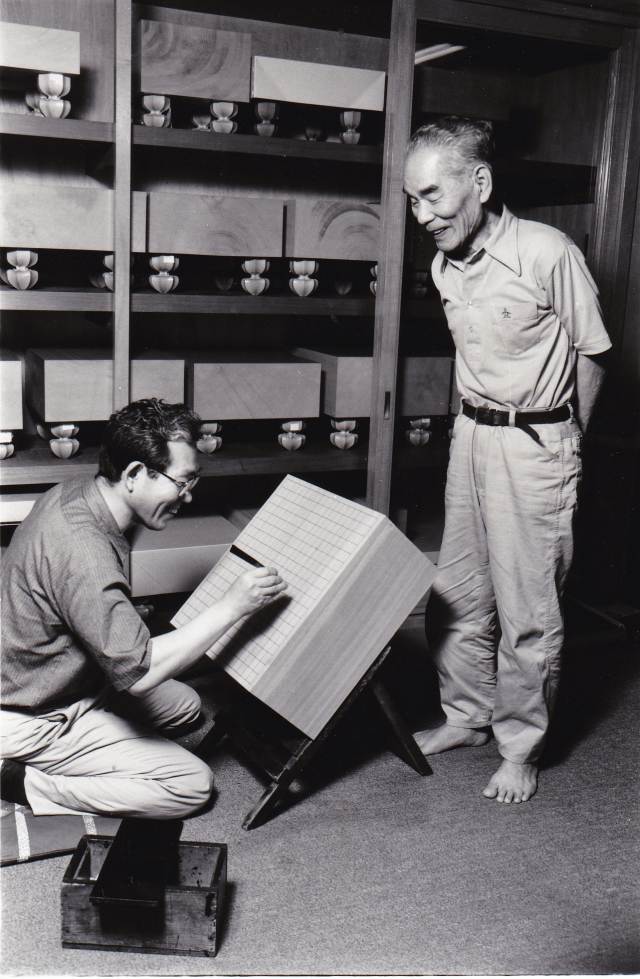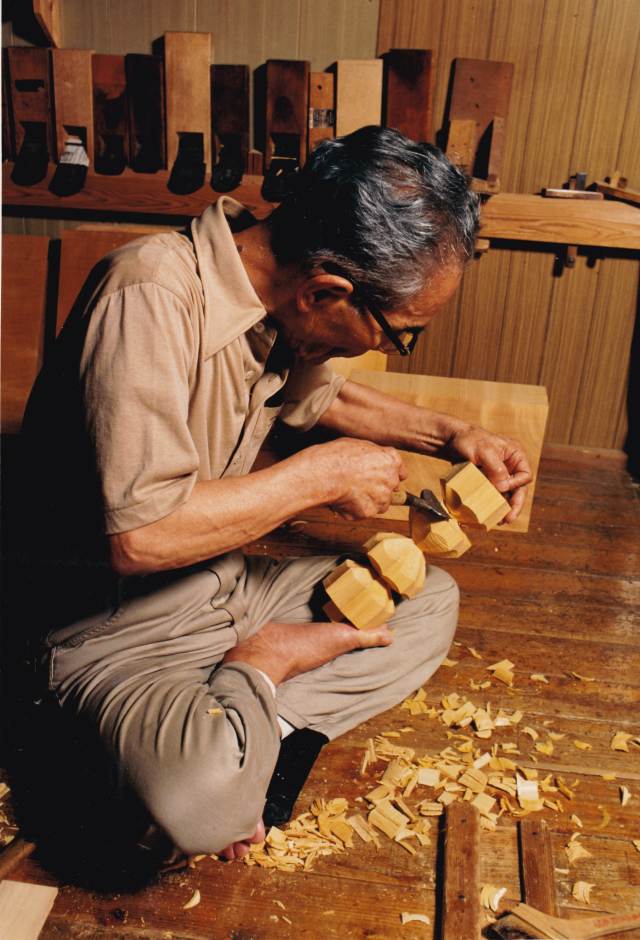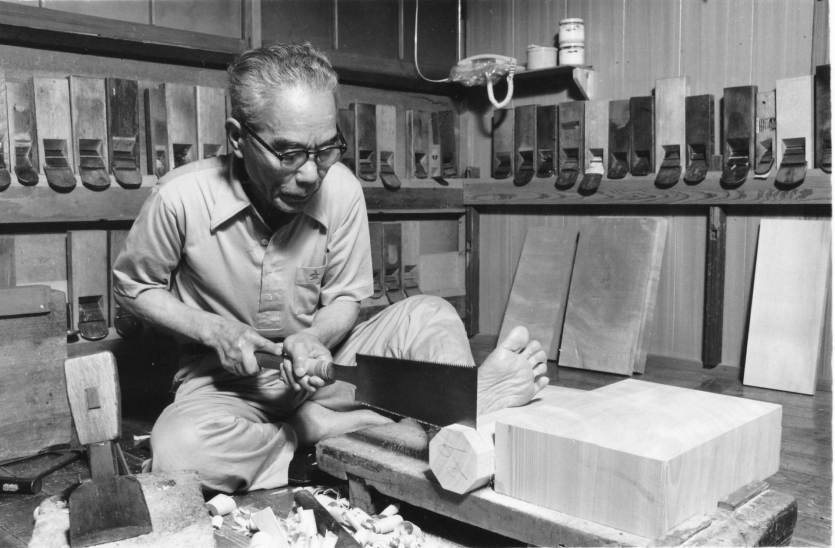
First of all, you will get the best material "good Kaya (Torreya nucifera)". The most suitable Go board is Kaya. Kaya has good elasticity that is neither too hard nor too soft when the stone is struck down, and has a beautiful grain and bright color, gives off a beautiful scent when the paulownia cover is removed, and can withstand many years of use. It has many advantages such as.
There are many trees on the Pacific side of Japan, but when you look at the material of the board, I think that the "grainy" Hyuga Kaya is the best. In particular, the Kaya cut out from the Aya Forestry Office in Kyushu is considered to be the highest quality material. I also visited many times, and it is a pretty scenic place in the remote mountains. Trees in places with many houses have many scratches and can be a problem. Perhaps it is because its geology and natural environment are suitable for growing straight-grained Kaya trees.
However, in the end, I can't understand until I cut the log. In that sense, it can be said that intuition and experience are reliable jobs. How to make a Go board from raw logs is one of the most difficult things for a Go board master.
 Next, and most importantly, make a board with no warp. When you get a good wood, cut into slightly larger wood pieces, let it air dry for more than 10 years, and then do a "temporary preparation". After that, it repeats several adjustments and waits for it to dry completely. In this way, only the carefully finished board will be a board that will not be "warped" in the future, let alone cracks and mold.
Next, and most importantly, make a board with no warp. When you get a good wood, cut into slightly larger wood pieces, let it air dry for more than 10 years, and then do a "temporary preparation". After that, it repeats several adjustments and waits for it to dry completely. In this way, only the carefully finished board will be a board that will not be "warped" in the future, let alone cracks and mold.
If even a small amount of water remains, it is easy to crack, stains, insects occurs, bad gloss, heavy, and bad taste. If you get something that a trader hastily put up for sale, you may cry later. In the olden days, it was said that if you sell a Go board that has been cut down for less than 10 years, the goodwill of the shop will be scratched.
In addition, We say noisy the season. The cutting season is the time when standing trees are cut down. Cut in the cold season from November to February.
Regarding production, We train Kanna (Japanese-style plane), that shaves wood, from a young age. If rainy days continue, wooden stand of Kanna will be distorted and it will not work.
Finally, there are 19 vertical and horizontal lines and 9 stars, and drawing them with Urushi (lacquer) is called "scale". Since ancient times, there have been three types of scales, called brush scales, spatula scales, and sword scales. Aside from the technique, it is important that each line is drawn in parallel and that the thickness is constant.
We draw the grid pattern with spatula, and this technique is called “Heramori". It is also called the Edo Heramori, and many Tokyo craftmans draw with a spatula. This method is imprinting Urushi on the board with an iron spatula, so it enables us to draw thick and very durable lines. It's the final touch, so I'm very nervous, but when everything goes well, I think many years of hard work will be rewarded.

Back to Top